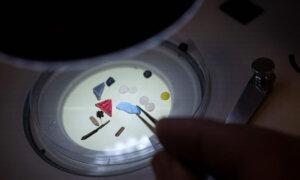Plastics are omnipresent. They offer convenience and have allowed for a host of innovations, but they have effects on the environment and our health.
Phthalates, a class of synthetic chemicals often referred to as “plasticizers” because of their common use in making plastic products flexible, are found in thousands of consumer products, from vinyl flooring to household cleaners and children’s toys. For most of us, our primary exposure to phthalates likely comes through plastic food containers and personal care products such as shampoos and cosmetics.
Phthalates–Under Scrutiny
Phthalates were already under suspicion because of a number of studies that highlighted the role they may play in shortening gestational age. Recently, The Lancet published a prospective analysis estimating the lifetime cost of prenatal exposure to phthalates in health outcomes, economic productivity, and monetary expenditures. The results are startling. The study authors reported that in 2018, an estimated 56,595 preterm births could be attributed to prenatal phthalate exposure, at a staggering cost:“The lifetime costs of preterm birth, inclusive of direct medical care, intellectual quotient loss, and other indirect consequences, was estimated to be US$64,815 per case in 2016. ... Other chronic conditions due to phthalates include childhood obesity, adult obesity and diabetes, endometriosis, male factor infertility, and cardiovascular mortality, with total costs nearly $100 billion annually.”Infants and young children are particularly vulnerable to the harmful effects of phthalate exposure on their developing brains. Project TENDR, an alliance of scientists, health professionals, and advocates working together to protect children from the brain-damaging effects of exposure to toxic chemicals, stated that prenatal exposure to phthalates can affect neurological development in infants and children, resulting in effects such as behaviors similar to attention-deficit/hyperactivity disorder, problems with conduct and aggression, and depression.
They also said, “Prenatal exposure has been associated with deficits in child IQ, working memory and executive functioning, as well as with problems in emotional regulation.”
Although children are particularly vulnerable, in adults, the effects of ongoing phthalate exposure include increased risk of obesity, diabetes, endometriosis, birth defects in the male reproductive system, cardiovascular disease, and thyroid irregularities.
It is impossible to live in contemporary society and completely eliminate phthalate exposure. Researchers estimate that the number of Americans with detectable levels of phthalates in their bodies is close to 100 percent. We can’t eliminate phthalate exposure, but we can reduce it by being more mindful of the food we eat and the products we use.
Identifying Phthalate-Free Products
There are some simple ways to reduce exposure to these harmful chemicals. The Environmental Working Group provides a cosmetics database (ewg.org/skindeep) and a Healthy Cleaning Guide (ewg.org/guides/cleaners), which can help consumers check for potentially harmful ingredients in their personal care or cleaning products and identify phthalate-free products. Look for personal care products with a “phthalate-free” label. Also, avoid products with the generic term “fragrance” in the ingredient list, as phthalates are commonly used in synthetic fragrances and can be hidden among the undisclosed “fragrance” ingredients.Reducing the use of plastic wrap and plastic food storage containers made from PVC (with the recycling label No. 3) and instead storing food in glass or stainless steel containers is another way to avoid phthalates.







